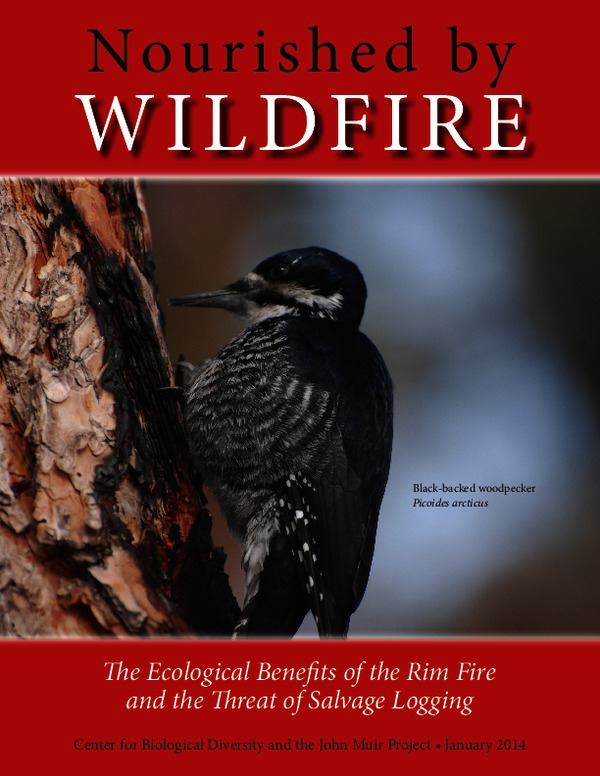From the Open-Publishing Calendar
From the Open-Publishing Newswire
Indybay Feature
New Report: Logging Would Impede Rim Fire's Benefits for Wildlife, Water, Forest
SAN FRANCISCO— A report released today (see PDF) outlines the important ecological benefits of last summer’s Rim fire in northern California and exposes how a U.S. Forest Service plan to allow 30,000 acres of logging in the burned area will cause significant harm to wildlife, water and the regrowing forest. The report, Nourished by Wildfire: The Ecological Benefits of the Rim Fire and the Threat of Salvage Logging, explains how fires are essential for maintaining biological diversity in the Sierra Nevada ecosystem. It was produced by the Center for Biological Diversity and the John Muir Project.
Today — Monday, Jan. 6 — is the last day for public comment on the scope of the Forest Service’s post-logging proposal.
“Burned forests are not dead zones, but rather teem with life,” said the Center’s Justin Augustine. “The reflex reaction to log after forest fires directly contradicts decades of scientific research showing both the immense ecological importance of post-fire landscapes and the significant harm that can occur when such areas are logged.”
The moderate and high-intensity fire areas in conifer forest within the Rim fire created what is known as “complex early seral forest” — one of the rarest, most biodiverse habitat types in the Sierra Nevada. Not only do post-fire landscapes provide critical wildlife habitat; if not logged, they can also result in a forest that is naturally more resilient to climate change.
The new report analyzes the Rim fire in relation to the relevant biological science and recommends that, rather than focusing on industrial-scale salvage logging, post-fire management should focus on activities that benefit forest health, water quality and the many native species that depend on fire for their existence.
“The Rim fire provided many environmental benefits,” said Dr. Chad Hanson, a research ecologist with the John Muir Project. “Most significantly, the high-intensity fire areas created critical wildlife habitat — a habitat that is even rarer and more threatened than old-growth forest.”
http://www.biologicaldiversity.org/news/press_releases/2014/black-backed-woodpecker-01-06-2014.html
“Burned forests are not dead zones, but rather teem with life,” said the Center’s Justin Augustine. “The reflex reaction to log after forest fires directly contradicts decades of scientific research showing both the immense ecological importance of post-fire landscapes and the significant harm that can occur when such areas are logged.”
The moderate and high-intensity fire areas in conifer forest within the Rim fire created what is known as “complex early seral forest” — one of the rarest, most biodiverse habitat types in the Sierra Nevada. Not only do post-fire landscapes provide critical wildlife habitat; if not logged, they can also result in a forest that is naturally more resilient to climate change.
The new report analyzes the Rim fire in relation to the relevant biological science and recommends that, rather than focusing on industrial-scale salvage logging, post-fire management should focus on activities that benefit forest health, water quality and the many native species that depend on fire for their existence.
“The Rim fire provided many environmental benefits,” said Dr. Chad Hanson, a research ecologist with the John Muir Project. “Most significantly, the high-intensity fire areas created critical wildlife habitat — a habitat that is even rarer and more threatened than old-growth forest.”
http://www.biologicaldiversity.org/news/press_releases/2014/black-backed-woodpecker-01-06-2014.html
Add Your Comments
We are 100% volunteer and depend on your participation to sustain our efforts!
Get Involved
If you'd like to help with maintaining or developing the website, contact us.
Publish
Publish your stories and upcoming events on Indybay.
Topics
More
Search Indybay's Archives
Advanced Search
►
▼
IMC Network



